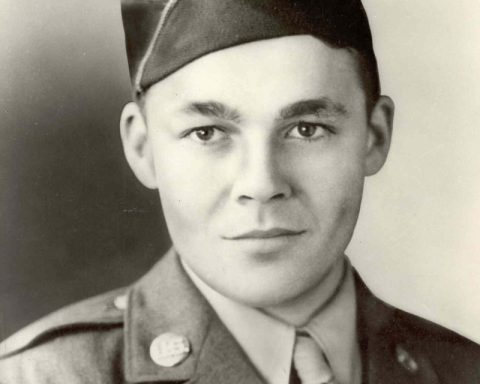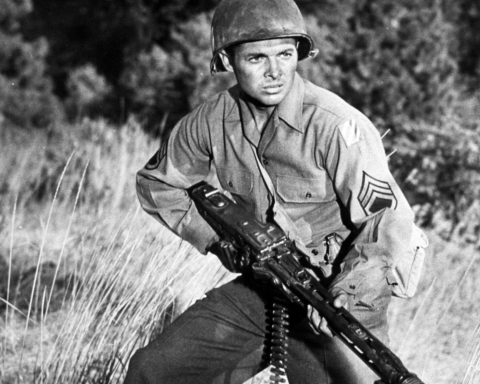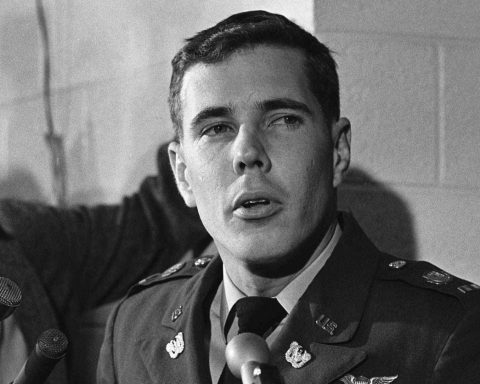The Fallujah’s Hell House has earned iconic status after one picture find its way to the world. One of the most gripping images of Operation Iraqi Freedom showing wounded Marine 1st Sgt. Bradley Kasal, covered with blood, being carried out of Fallujah’s Hell House by his fellow soldiers. The sculpture commemorating this event is installed in front of the Camp Lejeune’s Warrior Hope and Care Center.
Fallujah’s Hell House
During the month of November 2004 in Fallujah, Iraq he was assisting a Combined Anti-Armor Platoon for 3rd Battalion 1st Marines as they provided a traveling overwatch for another platoon when he heard a large volume of fire erupt to his immediate front, shortly followed by Marines rapidly exiting a structure.
When First Sergeant Kasal learned that his Marines were pinned down inside the house by an unknown number of enemy personnel, he joined a squad making entry to clear the structure and rescue the Marines inside. He made entry into the first room, immediately encountering and eliminating an enemy insurgent, as he spotted a wounded Marine in the next room. While moving towards the wounded Marine, First Sergeant Kasal and another Marine came under heavy rifle fire from an elevated enemy firing position and were both severely wounded in the legs, immobilizing them.
When insurgents threw grenades in an attempt to eliminate the wounded Marines, he rolled on top of his fellow Marine and absorbed the shrapnel with his own body.
When First Sergeant Kasal was offered medical attention and extraction, he refused until the other Marines were given medical attention. Although severely wounded himself, he shouted encouragement to his fellow Marines as they continued to clear the structure.
Sargent Major Kasal killed multiple insurgents with his M9 pistol at this time and by the time he reached a trauma surgeon he had lost about half of the blood in his body.
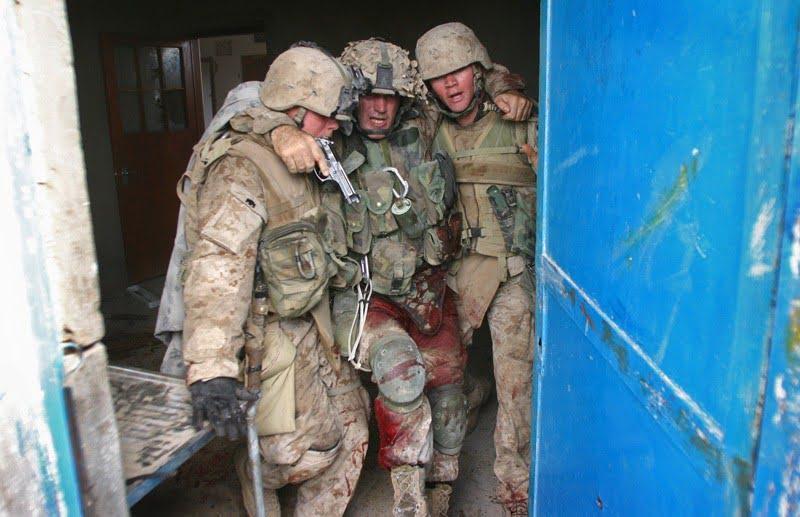
The legendary photo was snapped by freelance combat photographer Lucian Read during the second battle of Fallujah when Bradley Kasal entered the building where he saw trapped Marines inside, fighting with Iraqi insurgents in close quarters combat. Kasal and a few other Marines combed through the structure to find and rescue their wounded brothers-in-arms, getting hit repeatedly as they went by enemy gunfire and shrapnel.
1st Sgt. Bradley Kasal would receive the Navy Cross for bravery that day under fire and despite severe wounds to both legs. He jumped in without hesitation in order to help his fellow Marines. One interesting thing that can be seen in the photo is that despite being very obviously wounded, in a stressful situation, and being carried by his brothers, 1st Sgt. Kasal still has trigger discipline.
Sculpture in the Camp Lejeune
The men who created the sculpture, John Phelps from Wyoming, said the project has special meaning for him. He was commissioned to the project by the national nonprofit organization Hope for the Warriors. Phelps is a Vietnam veteran, who lost his son, Marine Lance Cpl. Chance Phelps on the same photo was taken. His son died to combat in Iraq in 2004. The journey of Lance Cpl. Phelps home from the battlefield after he was killed by enemy fire is portrayed in the 2009 HBO film Taking Chance, starring Kevin Bacon.
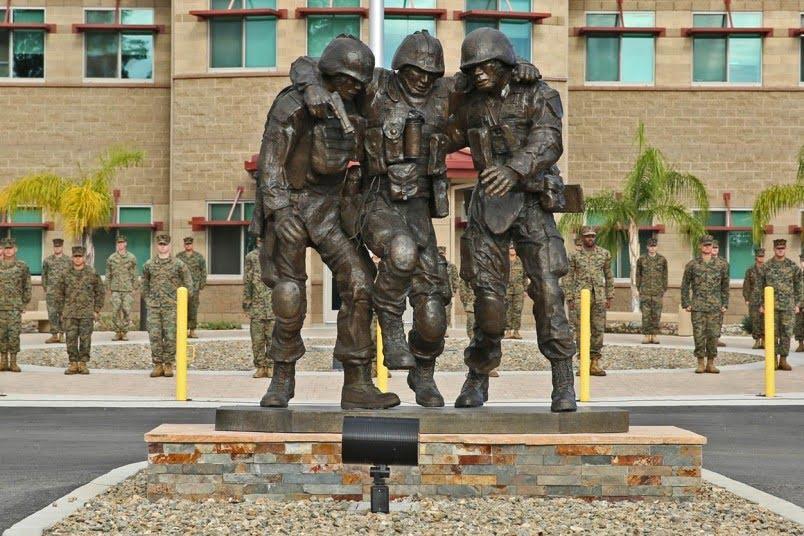
“It’s an honor for me to do it, it’s a presentation that I can make to recognize our service people and our wounded,” John Phelps said.
The Hope and Care Centers are facilities for the rehabilitation and recovery of wounded troops, planned and conceived by Hope for the Warriors and funded by the Marine Corps. The Camp Pendleton Hope and Care Center opened last October, and the Lejeune center opened a few months later in December. An identical sculpture is expected to be unveiled in front of the Pendleton center later this month.
The picture also becomes known as the No Man Left Behind. Besides the Uncommon valor photos, it has been recognized as the most iconic photo of the Battles of Fallujah.
